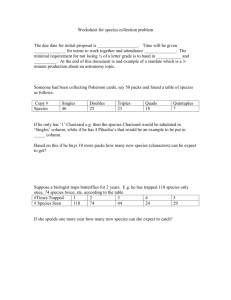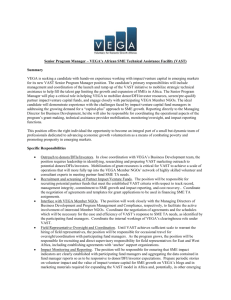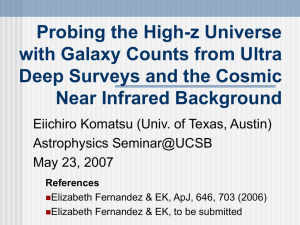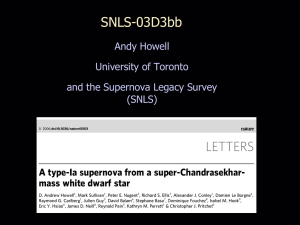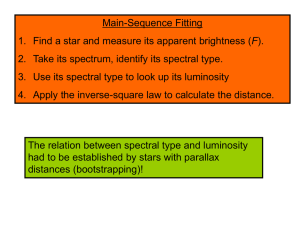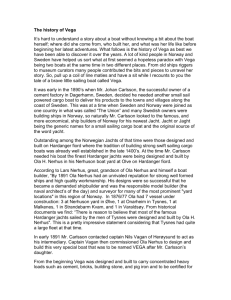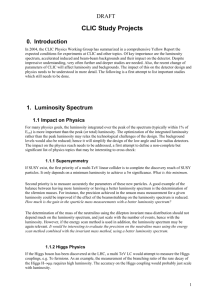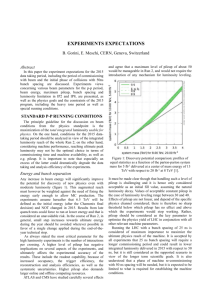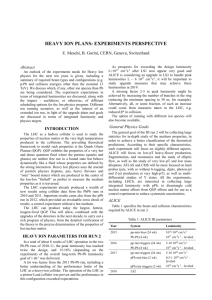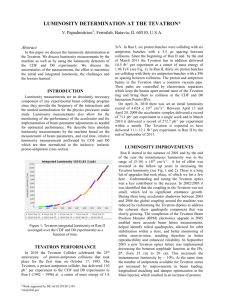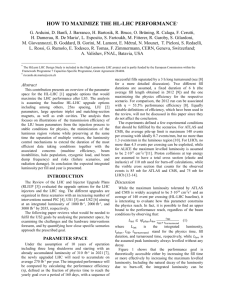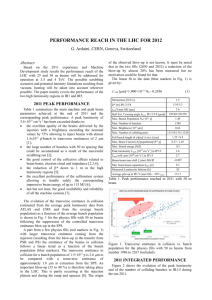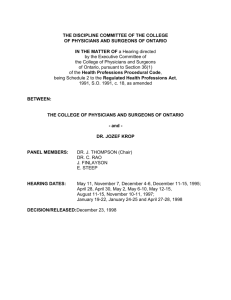a2_0405_tut6 - Astronomy & Astrophysics Group
advertisement
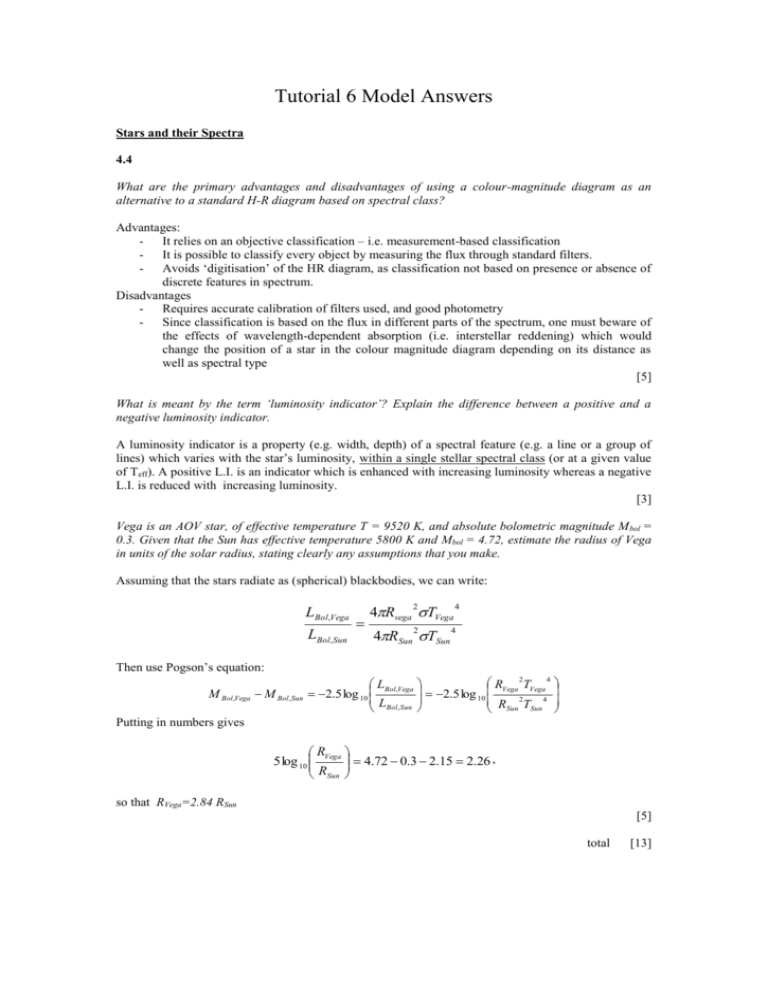
Tutorial 6 Model Answers Stars and their Spectra 4.4 What are the primary advantages and disadvantages of using a colour-magnitude diagram as an alternative to a standard H-R diagram based on spectral class? Advantages: - It relies on an objective classification – i.e. measurement-based classification - It is possible to classify every object by measuring the flux through standard filters. - Avoids ‘digitisation’ of the HR diagram, as classification not based on presence or absence of discrete features in spectrum. Disadvantages - Requires accurate calibration of filters used, and good photometry - Since classification is based on the flux in different parts of the spectrum, one must beware of the effects of wavelength-dependent absorption (i.e. interstellar reddening) which would change the position of a star in the colour magnitude diagram depending on its distance as well as spectral type [5] What is meant by the term ‘luminosity indicator’? Explain the difference between a positive and a negative luminosity indicator. A luminosity indicator is a property (e.g. width, depth) of a spectral feature (e.g. a line or a group of lines) which varies with the star’s luminosity, within a single stellar spectral class (or at a given value of Teff). A positive L.I. is an indicator which is enhanced with increasing luminosity whereas a negative L.I. is reduced with increasing luminosity. [3] Vega is an AOV star, of effective temperature T = 9520 K, and absolute bolometric magnitude M bol = 0.3. Given that the Sun has effective temperature 5800 K and Mbol = 4.72, estimate the radius of Vega in units of the solar radius, stating clearly any assumptions that you make. Assuming that the stars radiate as (spherical) blackbodies, we can write: LBol,Vega LBol, Sun 4Rvega TVega 2 4RSun TSun 2 4 4 Then use Pogson’s equation: R 2T 4 LBol,Vega 2.5 log 10 Vega Vega M Bol,Vega M Bol, Sun 2.5 log 10 R 2T 4 LBol, Sun Sun Sun Putting in numbers gives RVega 4.72 0.3 2.15 2.26 , 5 log 10 RSun so that RVega=2.84 RSun [5] total [13] Theoretical Astrophysics 1.13 Calculate the power spectra of the following waveforms: a) A pure sinusoid: (t ) A0 exp 2 i 0 t for all t, B( ) A0 0 2 (see Sect 1, pgs 1 – 3 of lecture notes for sketches) b) A pulse of duration 2 : (t ) A0 exp 2 i 0 t (t ) 0 for |t|< otherwise B( ) 4 2 sinc 2 2 0 Estimated line width = c) (see Sect 1, pg 6 of lecture notes for sketches) 1 / 2 An exponentially decaying sinusoid: (t ) A0 exp t / 2 exp 2 i 0 t (t ) 0 B( ) A02 for t > 0 for t < 0, (see Sect 2. pgs 1-2 of lecture notes for sketches) 4 2 0 1 / 4 2 2 For Friday 4th March 2005 Theoretical Astrophysics: SATS: 4.16 Q1.2 Q.4.16 (slightly modified version, see below) Astronomers have recently discovered the presence of dusty disks around nearby stars. Derive the equation for the radiative force acting on a dust grain of radius a, and prove that for such a dust grain to be in a circular orbit around a star of mass M, luminosity L, and at radial distance r the following equation must hold. Gm g M r2 mgv 2 r L a 4c r 2 Dust grains in orbit around a 10 solar mass star with bolometric magnitude +2.0 give rise to an infrared absorption line centred at 1.2m, with a Doppler width of 0.7 x 10 -4 m. Assuming that the dust grains are silicates, which have a density of 2.3 g cm-3 and that the dust-grain radius equals the mean wavelength of the absorption line, calculate the approximate distance at which the dust grains are orbiting. [ You may assume that the solar bolometric magnitude is +4.75 ]
